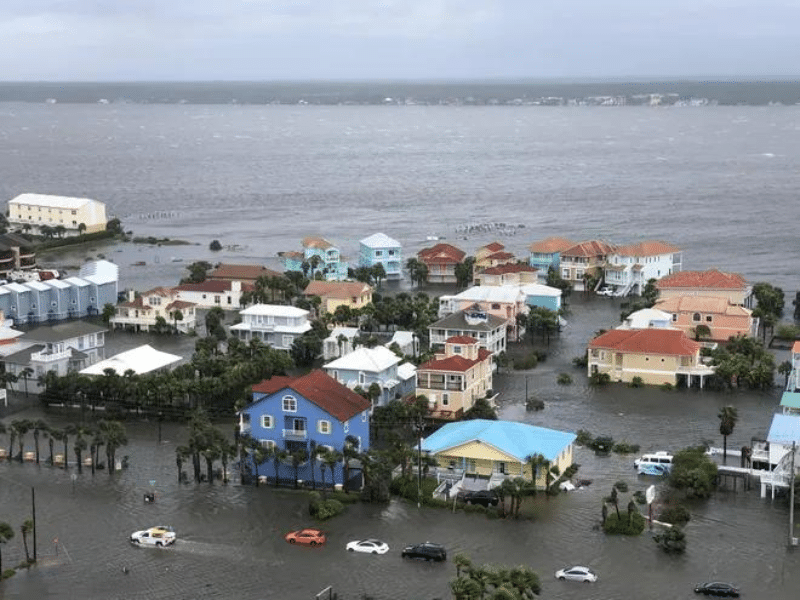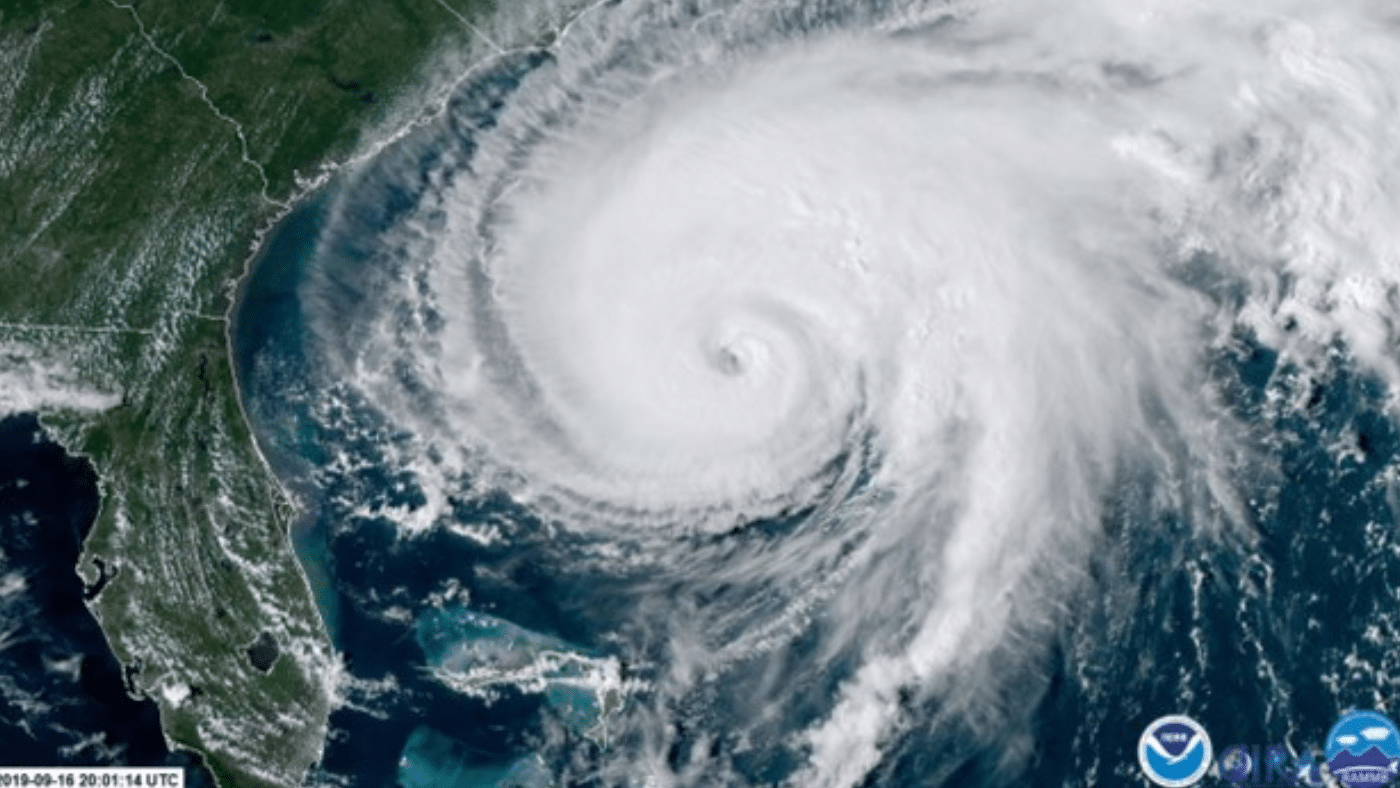The Atlantic hurricane season runs from June 1st to November 30th. The National Oceanic and Atmospheric Administration (NOAA) is predicting above-normal hurricane activity during the 2024 hurricane season with 17 to 25 named storms including an estimated 8 to 13 hurricanes.1 These estimations are derived by comparing hurricane activity from years with an El Niño to La Niña shift, as we have in 2024.
As we head into the 2024 hurricane season, this post provides important information about responding to water and mold damage caused by hurricanes and other catastrophic weather events.
Categories of Water Damage
The Institute of Inspection Cleaning and Restoration Certification (IICRC) Standard for Professional Water Damage Restoration, Fifth Edition (IICRC S500-2021) is a standard and reference guide that defines the three (3) categories of water, based on the level of contamination in water:
- Category 1: Sanitary “Clean Water” originates from a sanitary water source (e.g., water supply lines, melting ice/snow, falling rainwater, toilet tanks).
- Category 2: Significantly Contaminated “Grey Water” contains significant contamination and may cause discomfort or illness upon exposure. Can contain potentially unsafe levels of bacteria, viruses or mold. Includes dishwasher/washing machine discharge, toilet bowl overflow, hydrostatic pressure seepage, broken aquariums and punctured water beds.
- Category 3: Grossly Contaminated “Black Water” is grossly contaminated. It can contain toxins or pathogens. Includes sewage, waste line backflows, seawater, rising water from rivers/streams (floodwaters) and wind-driven rain from hurricanes/tropical storms. Such water sources may carry silt, organic matter, pesticides, heavy metals, regulated materials or toxic organic substances.
There is another category of water, defined as “Special Situations,” wherein a regulated or hazardous material is part of a water damage restoration project (such as arsenic, mercury, lead, asbestos, polychlorinated biphenyls (PCBs), pesticides, fuels, solvents, caustic chemicals and radiological residues). A specialized expert may be necessary to assist in damage assessment, and other government regulations may apply.
Time, temperature and contact with other materials can also affect the quality of the water, thereby changing its category. For example, the cleanliness of Category 1 water may deteriorate to Category 2 or 3 after encountering building materials or mixing with soils and other contaminants.
Classes of Water
Water can also be categorized into four classes determined by the amount of water and the likely or anticipated rate of evaporation based upon the quantity and type of wet materials in the affected space. This scale is essential to calculating the amount of initial dehumidification capacity necessary to adequately dry a structure. There are four (4) classes of water ranging from losses that only affect part of a room (Class 1) to water losses that include wet materials that have been deeply saturated (Class 4).

Flood waters caused by Hurricane Sally impact Navarre Beach in Pensacola, Fla., Sept 2020
Remediation Best Practices
In responding to storm-related water intrusion, a restorer will typically evaluate and document the source and timeline of the water intrusion. This process includes:
- evaluating the psychrometric (i.e., the relationship between the atmospheric air, humidity, airflow and temperature) conditions within the building
- measuring moisture content of affected and unaffected building materials
- documenting visible material deterioration and pre-existing damage
- assessing microbial growth
Along with a visual inspection, professional moisture-detection equipment should be used to evaluate moisture content in building materials and contents. Extraction/removal of standing water and saturated materials/building contents should be conducted, along with operation of fans and dehumidification equipment to dry the structure.
The following building materials and contents are typically removed/discarded during mitigation efforts:
- those directly submerged in floodwaters (Category 3). For example, it is standard practice to remove drywall that is impacted by pollutants 2-feet past visible damage in each direction
- materials damaged by water such that the structural integrity is compromised
- materials that cannot be adequately dried
- materials that have evidence of mold growth that cannot be properly cleaned (i.e., porous and some semi-porous materials).
Sometimes, sites cannot be safely accessed for days following a storm, allowing for the possibility of continued water intrusion and elevated humidity conditions suitable for mold growth, which can be exacerbated by power outages (e.g. AC systems off). Mold can begin to grow within 48-72 hours after exposure to moisture. If mold growth is present, the IICRC recommends cleaning/wet wiping and vacuuming with high-efficiency particulate air (HEPA) for non-porous and some semi-porous materials. Some semi-porous and porous materials (e.g. drywall, upholstered furniture, etc.) may not be adequately cleaned of mold growth and are typically removed/replaced.
It is important for a structure to be assessed for other storm damage that could contribute to continued moisture intrusion (e.g. roof, window and exterior façade damage). All potential water intrusion points should be repaired prior to initiating remediation to prevent re-impacting remediated areas.
Many properties are insured by multiple insurance carriers, which will respond to different types of damage (i.e., water damage versus mold). VERTEX can assist clients with the determination of activities and costs related to water damage versus mold, reasonable and necessary activities and costs, as well as engineering expertise to identify structural damage and the cause. For more information, please contact Brooke Tomchinsky, CIE, Senior Project Manager at VERTEX, or to learn more about VERTEX’s Forensic services or to speak with an Expert, call 888.298.5162 or submit an inquiry.
Secure Expert Catastrophic Response Services with VERTEX
When disaster strikes, VERTEX offers fast, expert services to help you recover quickly. From healthcare facilities to construction sites, our team is ready to assess and restore your property. Learn more about our Catastrophic Response Services here.
1 NOAA, “NOAA predicts above-normal 2024 Atlantic hurricane season”: https://www.noaa.gov/news-release/noaa-predicts-above-normal-2024-atlantic-hurricane-season




